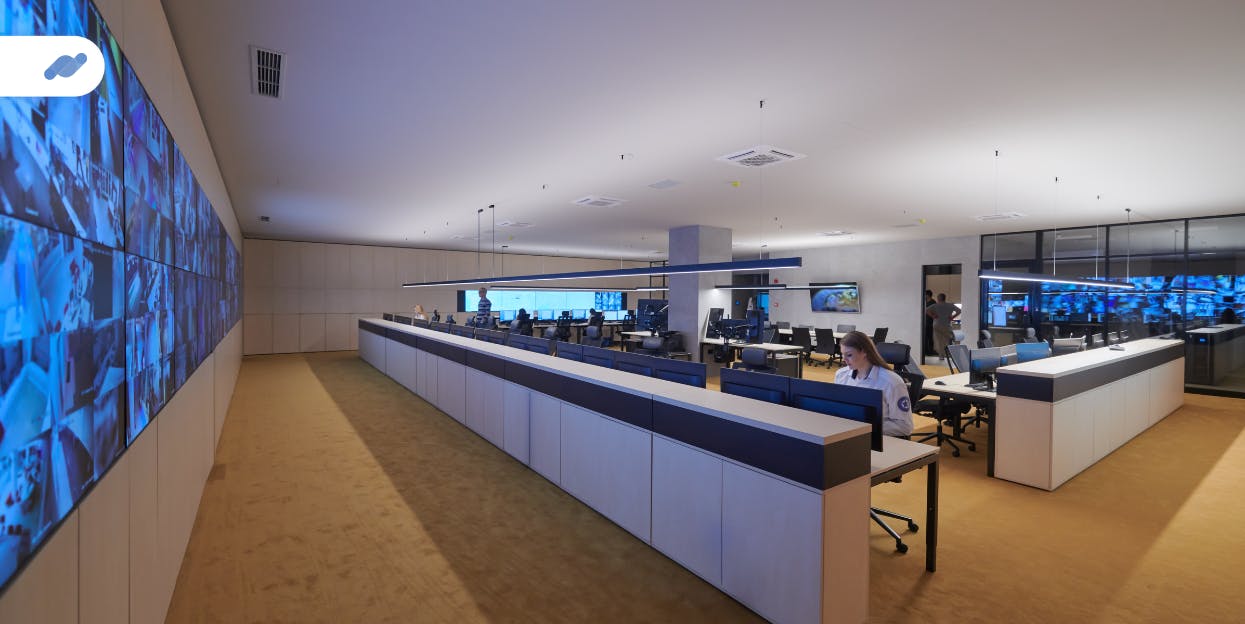
- Integrated Security Solutions
From access control to AI: Key security projects you need to tackle in 2025
Physical security has evolved dramatically over the past few years, embracing innovations that improve resilience, streamline operations, and help organizations stay one step ahead of potential threats. In 2025, physical security professionals will have a clear set of strategic projects to tackle to stay in the game. Below, we’ll explore the most prominent ones—what they entail and why they’ve earned a spot on everyone’s roadmap.
1. Modernizing access control
Traditionally, access control was mainly about restricting unauthorized entry. Now, organizations aim to do more with these systems, turning them into hubs that deliver operational efficiencies and a better user experience.
Why:
- Improved processes: Automated visitor registration, advanced biometric authentication, and centralized identity management all help reduce manual steps and potential errors.
- Compliance made simpler: Biometrics and robust identity management make it easier to prove adherence to regulations and data privacy requirements.
- Future-proofing: Access control systems built on modern standards can be adapted and expanded with minimal friction over time.
Read more about the future of access control here.
2. Video surveillance & intelligent monitoring
Video surveillance systems have long been a staple of physical security, but the trend now is toward replacing legacy systems with AI-augmented cameras and cloud-based platforms. These solutions offer higher-resolution cameras, automatic motion detection, and real-time alerts.
Why:
- More actionable insights: Crisp imagery and advanced analytics help identify suspicious activities more accurately, reducing false alarms.
- System unification: Modern video management systems (VMS) can be integrated with access control platforms, allowing a unified perspective and faster incident response.
- Cost optimization: Smart analytics reduce bandwidth, storage needs, and on-site staffing, ultimately lowering operational expenses.
Read more about the future of smart video surveillance here.
3. Bolstering cybersecurity
With so many physical security devices now networked, cybersecurity is a critical piece of the puzzle. The same connectivity that enhances oversight also raises vulnerabilities if not properly managed.
Why:
- Integrated defense: Physical systems, from cameras to access control readers, must have adequate encryption and patching protocols to prevent unauthorized access.
- Regulatory compliance: Growing regulations around data privacy and cybersecurity mean organizations must show they’ve taken proactive measures to protect electronic systems and information.
- Holistic resilience: By closing gaps in both digital and physical defenses, businesses reduce the likelihood of costly breaches or operational downtime.
Read more about how evalink ensures cybersecurity excellence here.
4. AI-powered solutions
Artificial intelligence continues to generate buzz, with more organizations experimenting or planning deployments. Yet, uncertainty about how to deploy AI effectively remains a hurdle for some.
Why:
- Efficiency: AI-driven tools automate time-consuming tasks, such as analyzing video streams or sensor data for anomalies, freeing security teams to focus on higher-level strategies.
- Predictive capabilities: AI can detect subtle patterns in data, potentially pinpointing threats before they escalate into incidents.
- Education gap: Many organizations want training and guidance to ensure they maximize the value of AI without falling into hype or misapplication.
5. Analytics and data visualization
Security data is more abundant than ever —from logs of people entering a facility to suspicious motion detected on camera feeds. Today’s analytics platforms turn these raw inputs into actionable insights, often displayed in real-time dashboards.
Why:
- Faster insights: User-friendly dashboards help teams immediately understand anomalies, trends, and risk levels.
- Data-driven strategy: Data can guide security resource allocation and budget planning, but also strategic insights on business growth
- Collaboration: Visual dashboards allow multiple stakeholders (IT, compliance) to analyze security data together.
Discover evalink analytics here.
6. Incident management and response
Incident management platforms now integrate more seamlessly with video analytics, access control events, and even cybersecurity alerts. This unification makes real-time responses more coordinated and effective.
Why:
- Centralized communication: Security teams can share situational data with internal stakeholders and first responders when an incident is flagged.
- Audit trails: Automatic logging of events and responses simplifies internal reviews and compliance audits.
- Continuous improvement: Post-incident debriefs, backed by comprehensive data, help refine policies and procedures.
Conclusion
It’s clear that 2025 is shaping up to be a year of transformation in physical security. However, not every business needs to pursue all these initiatives. Each organization should tailor its roadmap to its unique needs, risk profile, and regulatory environment.
The key takeaway? Integrated security solutions make it possible to combine multiple components—access control, video surveillance, AI, and beyond—into a cohesive approach. By selecting technologies that work harmoniously, businesses can gradually scale up their capabilities without sacrificing agility or budget. In the end, the goal is to keep people and assets safe while generating actionable intelligence that supports broader organizational success.


